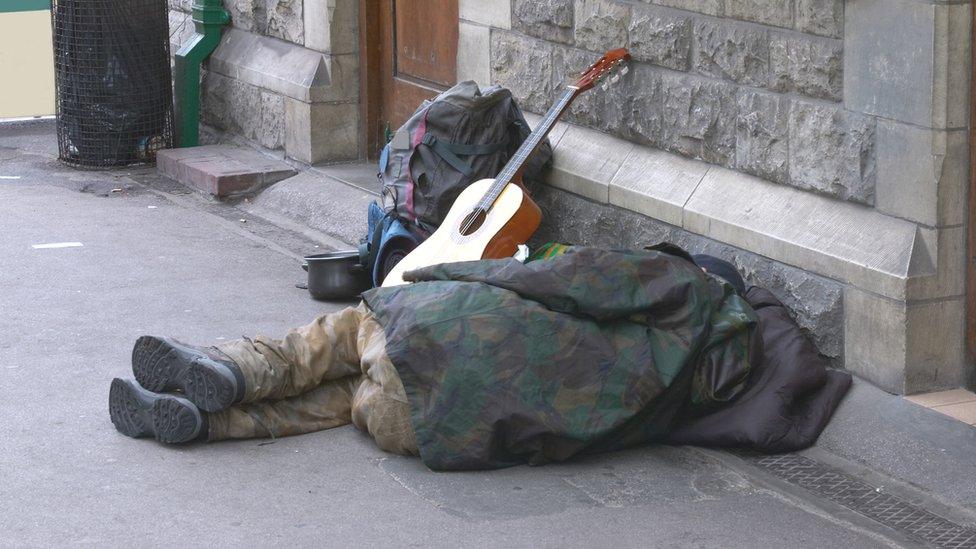Homelessness services in Dumfries and Galloway improved
- Published

A number of weaknesses in services for the area had been indentified in 2016
Homelessness services have improved "significantly" in Dumfries and Galloway, according to findings from an independent inquiry.
The report from The Scottish Housing Regulator found there had been a rise in the number of lets to the homeless.
It also found people were waiting less time for settled accommodation.
Dumfries and Galloway Council launched a review in 2016 after a number of weaknesses were highlighted in its Housing Options and Homeless Service.
'Significant progress'
One area of improvement identified was the council working more "effectively" with its Registered Social Landlord (RSL) partners to provide services and accommodation.
The new report found there had been a rise in properties being let to the homeless, including newly-built accommodation.
The council and its partners allocated 439 homes to people who were homeless in 2018-19, up from 209 homes in 2015-16.
The report found the council reduced the length of time people spent in temporary accommodation from 126 days in 2017-18 to 101 in 2018-19.
It has also reduced the number of people waiting more than a year for an outcome on their application.
Those waiting more than 12 months reduced from 81 people in 2014-2015 to 0 in 2018-2019.
'Further improvement'
The report highlighted key areas where further improvement could be made so people could better access support and suitable accommodation.
This included the council doing more to publicise the services on offer and improve its reception service.
It stated further attempts should be made to provide suitable temporary accommodation to the homeless and improve what is currently being offered.
The report found the council did not always offer temporary accommodation when it had a duty to do so, especially in emergency out-of-hours situations.
It also identified there were times a homeless application was not taken on by the council when they had a duty to do so.
According to the report, this means the council had underestimated the homelessness need and demand in the area.